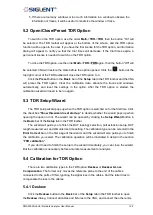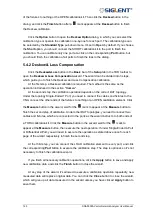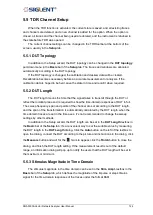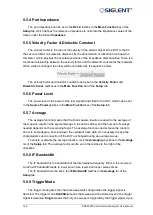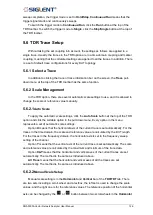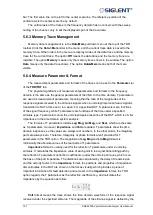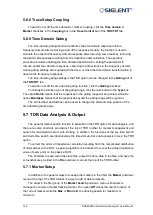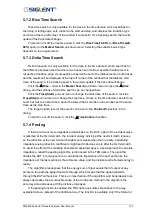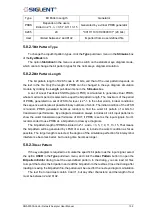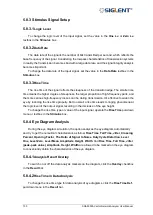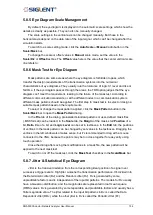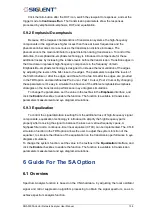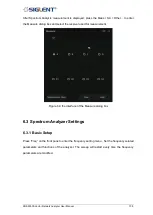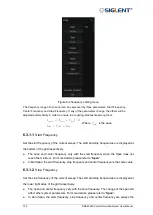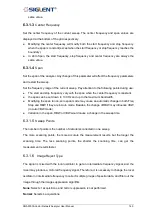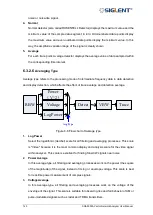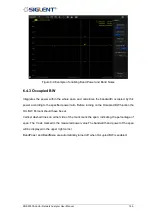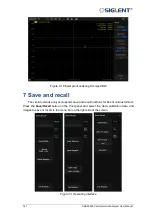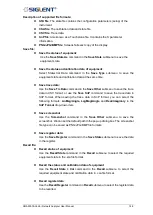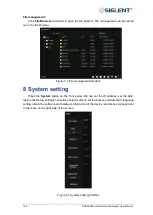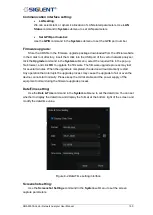
SNA5000A Vector Network Analyzer User Manual 136
Click the ratio button after the DUT icon, switch the viewpoint to responses, and set the
trigger mode to
Continuous/Run
. The transmission parameters show the responses
processed by emphasis/de-emphasis, DUT, and equalization.
5.9.2
Emphasis/De-emphasis
Because of the lowpass characteristics of transmission systems, the high-frequency
components in the signal have higher losses than those at lower frequencies and the
phenomenon becomes more serious as the transmission distance increases. The
phenomenon is the main contributor to signal distortion during transmission. To control this
distortion, the emphasis/de-emphasis technology is introduced to compensate for these
additional losses by increasing the relative levels before the transmission. Transition edges in
the time domain represent high-frequency components in the frequency domain.
Emphasis/De-emphasis technology is designed to increase the level variation of the edges
by adjusting the levels of the bits close to the edges. The parameters to adjust the levels of
the first bit before or after the edges, and those for the two bits after the edges, are provided
in the TDR option and are defined as Pre Cursor, Post 1 Cursor, Post 2 Cursor. By changing
these parameters, it's easy to simulate the influence of the different emphasis/de-emphasis
strategies on the transmission performance in eye diagram simulations.
To change the parameters, set the value in the textbox in the
Emphasis
interface, and
click the
Enable
checkbox to enable the function. The function is available in transmission
parameters measurement and eye diagram simulations.
5.9.3
Equalization
To control the signal distortion resulting from the additional loss of high-frequency signal
components, equalization technology is introduced to amplify the high-frequency parts
properly after receiving the signal to balance the loss over variousfrequency spans. A
highpass filter and a continuous-time linear equalizer (CTLE) can be implemented. The CTLE
simulation function in the TDR option allows the user to adjust the system function of the
equalizer, to simulate the inflence of the equalization on the transmission performance in eye
diagram simulations.
To change the system function, set the value in the textbox in the
Equalization
interface, and
click the
Enable
checkbox to enable the function. The function is available in transmission
parameters measurement and eye diagram simulations.
6
Guide For The SA Option
6.1 Overview
Spectrum Analysis function is based on the VNA hardware, by adjusting the local oscillator
signal and mirror suppression algorithm processing to obtain the signal spectrum, so as to
achieve spectrum analysis function.
Summary of Contents for SNA5000A Series
Page 2: ......

